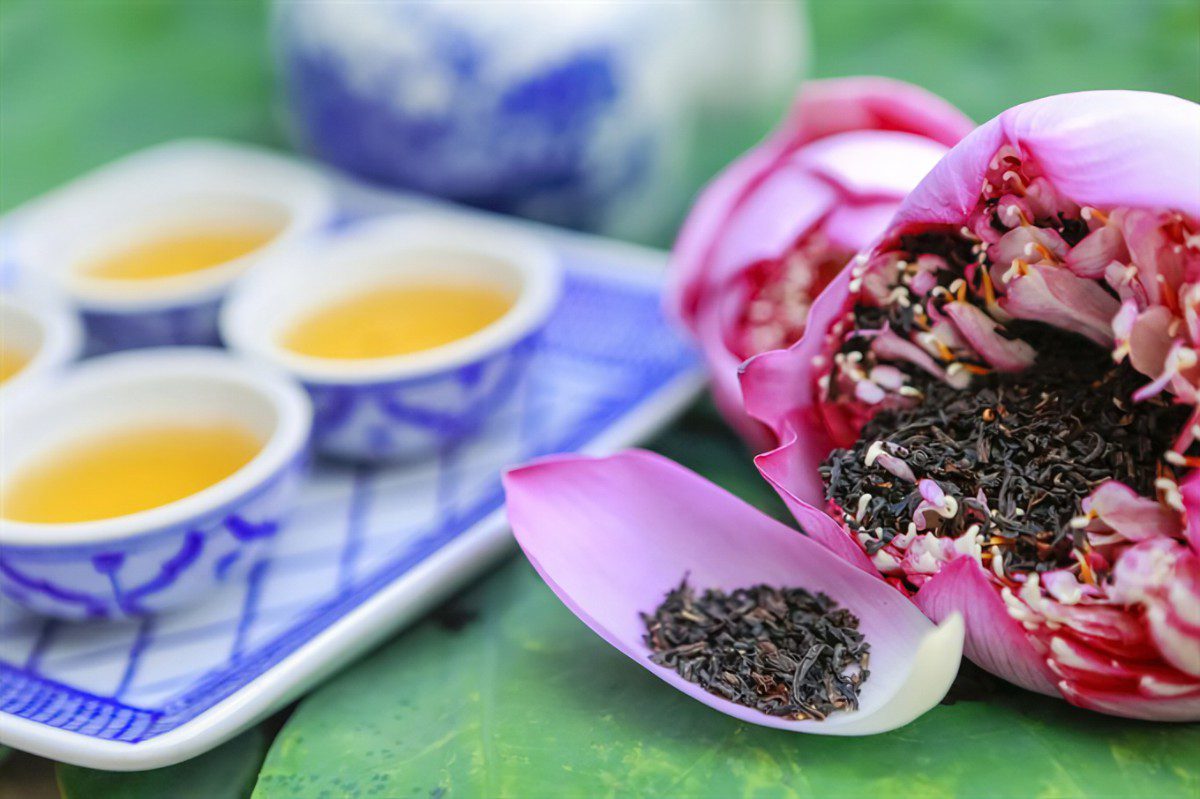As the lovely water lotus began to bloom, the people living in the Tay Ho district became merry with their tea. The way the Ha Thanh people make and enjoy lotus tea has always been the most deplorable image in the hearts of many tourists.
Because of its exquisite flavor and meticulous attention to detail at every stage of production, Tay Ho lotus tea has long been referred to as the “historic treasured tea.” Bach Diep lotus, which is a lotus with numerous small scenes and pink-colored buds, is the type of lotus used to marinate tea. To ensure freshness and preserve the full flavor of the flower, lotus is picked early in the morning while the water is still slightly damp.
Tay Ho lotus tea is a blend of the rich flavor of Xinjiang tea with the unique aroma of Bach Diep lotus rice. Through the skillful hands and meticulousness of the craftsman, a delicious, rich drink, with the typical flavor of Ha Thanh land is born.
From the end of May to the beginning of September every year, traditional tea makers in Quang An ward are busy at each stage of making lotus tea. Because marinating lotus tea requires meticulousness, the worker always gives every grain of lotus rice and tea bud his heart and soul. Each flower is selected, brought back to the rice cup—which is comparable to the lotus flower’s incense bag—and marinated. Taking lotus rice requires great care and attention from the worker. Not everyone knows how to make lotus rice retain its flavor and not be crushed. The petals, pistils, and lotus rice are separated by the deft hands of artisans.
Ms. Bach Diep, a 40-year-old resident of Tay Ho’s Quang An ward, shared: “About 900–1000 flowers are needed to produce 100g of lotus rice. The most challenging step in the separation of lotus rice is to ensure that it is white, not crushed, and retains its fragrance. This requires quick and skilled hands.”
After being sufficiently brewed and dried, lotus rice and stigmas are combined with small-winged Xinjiang tea and placed inside the lotus flower before being tightly covered with lotus leaves. Each cup of tea has a fragrant aroma mixed with lotus after the lotus flower has been wrapped around the tea and is plugged in for one night so that the lotus aroma permeates the tea evenly. This lotus tea is produced frequently during the actual lotus season, with prices ranging from 40,000 VND per cotton.
Making lotus tea is not only for a living but also a way for people here to preserve traditional culture
The fourth generation of the family with a tradition of lotus tea, Mr. Ngo Van Siam (12 Dang Thai Mai, Quang An, Tay Ho), shared: “Born and raised in Quang An, I grew up in a family with many generations of lotus flavored tea, passed down by my parents, and so far I have been attached to the profession of nearly 60 lotus seasons here.”
Talking about the secret to creating lotus tea cups with the special flavors of Quang An people, Mr. Siam said: “To make this drink is not too difficult but requires meticulousness and perseverance, the quintessential flavor of lotus tea cup has actually gone through 7 times of rice brewing and drying. The more times you marinate, the more intense the lotus aroma, the longer the tea will be fragrant. A batch of lotus tea must be green, drink at first with an astringent taste, then with a sweet taste and a soft, gentle lotus aroma in the mouth.”
Because of such sophisticated and complex processing, Tay Ho lotus tea often costs more than other teas on the market, but not so much that Tay Ho lotus tea has no place in the market. Although the situation of the Covid-19 epidemic is complicated, Tay Ho lotus tea has few opportunities to be promoted at fairs and food stalls in the city, but thanks to the development of information technology, it has connected tea makers and customers in all parts of the country.
Not only is the drink of Tay Ho lotus tea also imbued with the culture and sophistication of the Ha Thanh people, a precious gift for those who go far to remember the land of the period.
More related topic: Vietnamese Fish Sauce – The Soul Of The Nation’s Food
